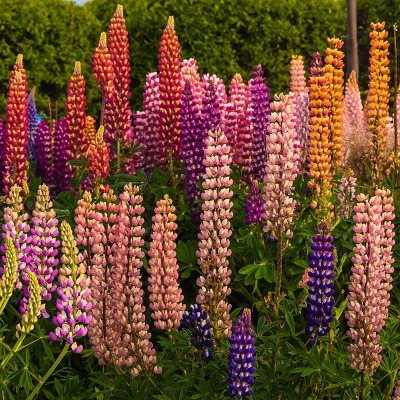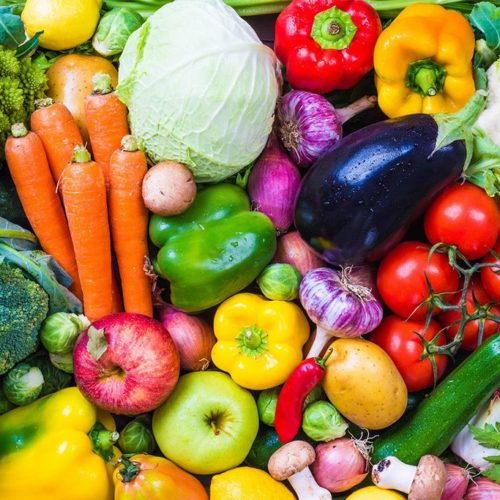-
Sale!Out of stock
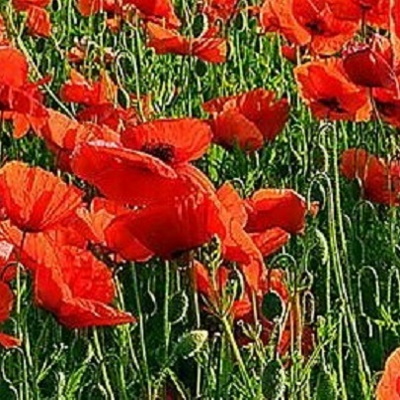
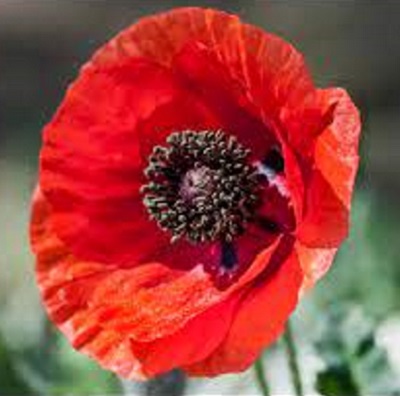
Description
Flanders Field Poppy Seeds is an Heirloom Flower. These very symbolic WWI flowers were the common field poppies of Europe. The brilliant crimson, single red blooms with black centres that are long-blooming and very pretty in the garden. These poppies will reseed themselves and can naturalize in your garden. Plants grow to 45 cm (18″) tall in the garden.How to Grow
Sow directly outdoors for the best results. Select a sunny site with well-drained soil. Barely cover the seed with soil and keep moist through the 5-10 day germination period. Enjoys full sun to partial shade location. -
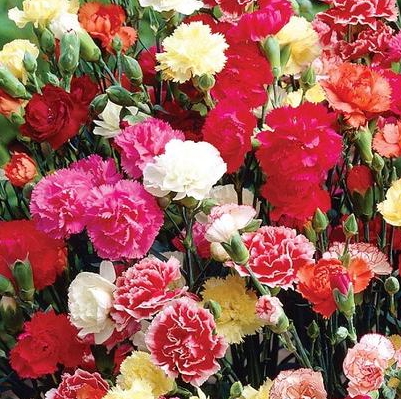
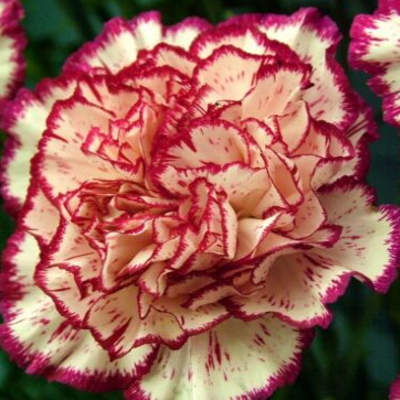 Chabauds Giant Carnation is a half-hardy biennial prized for its long bloom season. Large flowers with lovely spicy, clove-like fragrance bloom in many shades of crimson, red, rose, pink, yellow, and white. Carnations grown in groups make a striking attraction in gardens. For early blooms, start indoors 6-8 weeks before the last frost. Thin or transplant when 15-25 cm tall. This tender perennial can overwinter in milder climates. To overwinter in Zone 3b to 4a cover with a thick layer of mulch but remove mulch in early spring. One of the garden favourites-Chabauds Giant Carnation does not readily self-sow. Harvest early spent blossom head by cutting stem near the ground and hang dry with a paper bag tied around the stem to catch seeds that may drop.
Chabauds Giant Carnation is a half-hardy biennial prized for its long bloom season. Large flowers with lovely spicy, clove-like fragrance bloom in many shades of crimson, red, rose, pink, yellow, and white. Carnations grown in groups make a striking attraction in gardens. For early blooms, start indoors 6-8 weeks before the last frost. Thin or transplant when 15-25 cm tall. This tender perennial can overwinter in milder climates. To overwinter in Zone 3b to 4a cover with a thick layer of mulch but remove mulch in early spring. One of the garden favourites-Chabauds Giant Carnation does not readily self-sow. Harvest early spent blossom head by cutting stem near the ground and hang dry with a paper bag tied around the stem to catch seeds that may drop. -
Out of stock
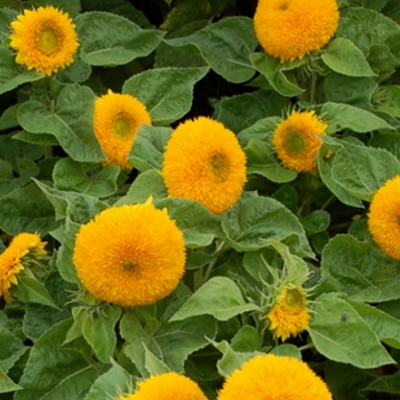
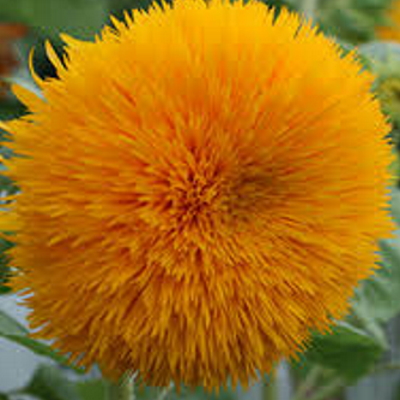 Sunflower ‘Teddy Bear’ is a short, bushy plant with fluffy, golden-yellow blooms that appear from mid-summer to the first frost in autumn. The mature size of Teddy Bear sunflower plants is 4 to 5 feet (1.4 m.). Growing Teddy Bear sunflowers by seed isn’t complicated. The most important thing is to plant seeds where your Teddy Bear sunflower plants will be exposed to full sunlight. Well-drained soil is also an absolute requirement for any type of sunflower. Plant Teddy Bear sunflower seeds after you’re sure all danger of frost has passed. Prepare the soil prior to planting sunflowers by digging a generous amount of compost, well-rotted manure, or other organic matter into the top 15-20 cm of soil. Sow seeds in groups of three, at a depth of ½ inch. Thin the plants to a distance of 40-60 cm when the true leaves appear. Water as needed to keep the soil moist, but not drenched, until your sunflower ‘Teddy Bear’ plants are established Sunflower seeds should be direct sown in the garden. If starting 3-4 weeks early plant in large cow pots so roots are not disturbed when transplanting into the garden.
Sunflower ‘Teddy Bear’ is a short, bushy plant with fluffy, golden-yellow blooms that appear from mid-summer to the first frost in autumn. The mature size of Teddy Bear sunflower plants is 4 to 5 feet (1.4 m.). Growing Teddy Bear sunflowers by seed isn’t complicated. The most important thing is to plant seeds where your Teddy Bear sunflower plants will be exposed to full sunlight. Well-drained soil is also an absolute requirement for any type of sunflower. Plant Teddy Bear sunflower seeds after you’re sure all danger of frost has passed. Prepare the soil prior to planting sunflowers by digging a generous amount of compost, well-rotted manure, or other organic matter into the top 15-20 cm of soil. Sow seeds in groups of three, at a depth of ½ inch. Thin the plants to a distance of 40-60 cm when the true leaves appear. Water as needed to keep the soil moist, but not drenched, until your sunflower ‘Teddy Bear’ plants are established Sunflower seeds should be direct sown in the garden. If starting 3-4 weeks early plant in large cow pots so roots are not disturbed when transplanting into the garden. -
Out of stock
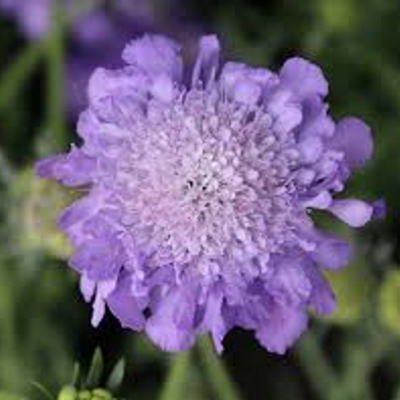
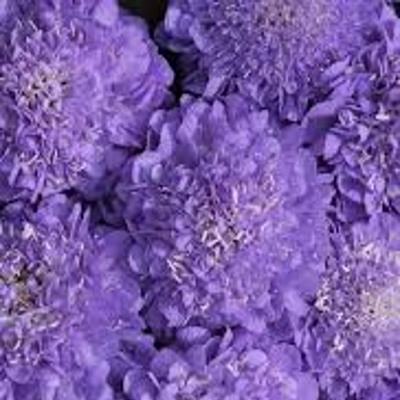
a.k.a Pincushion Flower
Elegant and uniform cut flower.
Matures in 90-100 days Package contains: 50 Seeds1 1/2–2 1/2", lavender-blue flowers stand tall on strong, slender stems. A dramatic addition to any bouquet or garden. Also known as mourning bride -
Out of stock
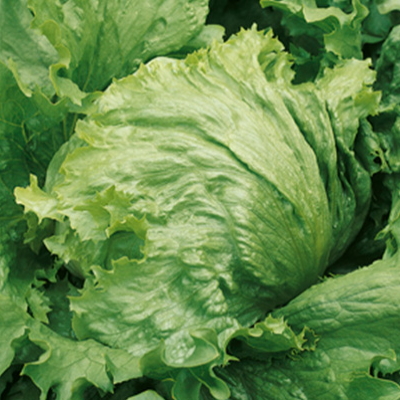 This small iceberg lettuce is compact small heads and is great for small families. It matures quickly and tolerates the heat well, so plant in intervals throughout the season to keep a fresh supply. Pick early in the morning for crisp fresh lettuce on hand. Nice dark green leaves have a crisp, sharp flavour. High resistance to downy mildew.
This small iceberg lettuce is compact small heads and is great for small families. It matures quickly and tolerates the heat well, so plant in intervals throughout the season to keep a fresh supply. Pick early in the morning for crisp fresh lettuce on hand. Nice dark green leaves have a crisp, sharp flavour. High resistance to downy mildew. -
Out of stock
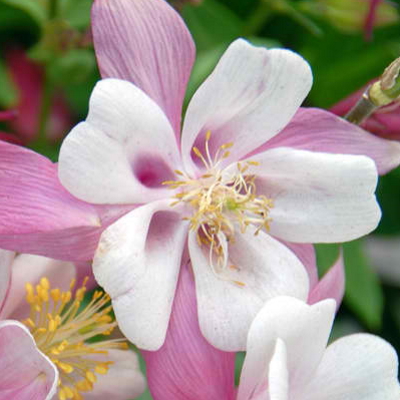 Beautiful pastel columbine seeds approximately 100 count. Learn: How to grow Columbine plants
Beautiful pastel columbine seeds approximately 100 count. Learn: How to grow Columbine plants -
Out of stock
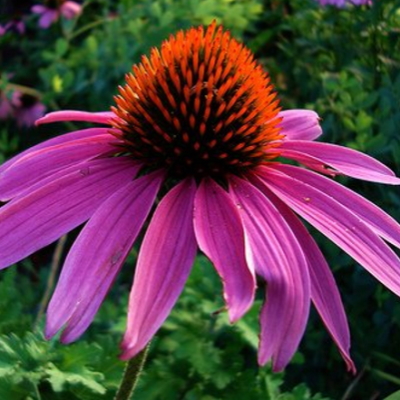 Purple coneflowers are found in many flower gardens. Purple coneflower (Echinacea purpurea) in the garden or flower bed draws bees and butterflies, ensuring that nearby plants have plenty of pollinators. The plant also provides a tall background or repeating rows of large (often 6 inches across) purple, daisy-like flowers. The sturdy stalks, which may reach 5 feet in height, rarely bend or require staking for an upright appearance. Coneflower plants may actually display pink flowers, when the cultivar Echinacea purpurea ‘Pink Double Delight’ is planted.
Purple coneflowers are found in many flower gardens. Purple coneflower (Echinacea purpurea) in the garden or flower bed draws bees and butterflies, ensuring that nearby plants have plenty of pollinators. The plant also provides a tall background or repeating rows of large (often 6 inches across) purple, daisy-like flowers. The sturdy stalks, which may reach 5 feet in height, rarely bend or require staking for an upright appearance. Coneflower plants may actually display pink flowers, when the cultivar Echinacea purpurea ‘Pink Double Delight’ is planted. -
Out of stock
 Single daisy-like flowers in shades of pink, red, rose, or white completely cover the 75 cm high bushy plants from May through June. Gorgeous spring and summer colour in sun or partial shade. Invaluable for cutting, cut as soon as colour shows. If cutting for dried flowers harvest immediately after bloom opens. Avoid high fertility. Moist, well-drained soil is best–try raised beds or containers if your soil is heavy. Hardy to Zone 5 with protection. These daisies often self-seed and interestingly, direct sown or self-sown established plants are hardier than transplants.
Single daisy-like flowers in shades of pink, red, rose, or white completely cover the 75 cm high bushy plants from May through June. Gorgeous spring and summer colour in sun or partial shade. Invaluable for cutting, cut as soon as colour shows. If cutting for dried flowers harvest immediately after bloom opens. Avoid high fertility. Moist, well-drained soil is best–try raised beds or containers if your soil is heavy. Hardy to Zone 5 with protection. These daisies often self-seed and interestingly, direct sown or self-sown established plants are hardier than transplants. -
Out of stock
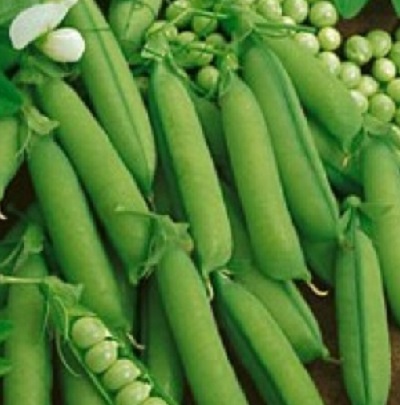 Great for both Spring and Fall planting! Matures in 50-60 days. Expect heavy yields of round, straight, pale green pods, each containing five to eight smooth peas. Peas prefer full sun to partial shade. Space peas 2.5cm-4cm apart. This shorter variety only reaching 90cm (3 feet) a short trellis can be used. They grow best when planted on the crowded side. These are great when eaten fresh in the garden and take only 5-10 days to germinate. They offer 5-7 peas per pod and have a sweet and delicious flavour.
Great for both Spring and Fall planting! Matures in 50-60 days. Expect heavy yields of round, straight, pale green pods, each containing five to eight smooth peas. Peas prefer full sun to partial shade. Space peas 2.5cm-4cm apart. This shorter variety only reaching 90cm (3 feet) a short trellis can be used. They grow best when planted on the crowded side. These are great when eaten fresh in the garden and take only 5-10 days to germinate. They offer 5-7 peas per pod and have a sweet and delicious flavour. -
Out of stock
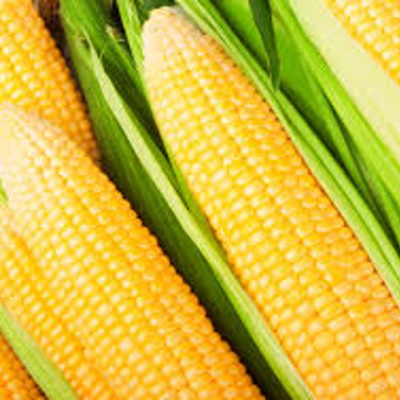 Hybrid-73 Days- Can germinate in cool soil and a short growing season make Kandy King corn seeds number one for early cropping. Tender and sweet yellow kernels grow on 20-22 cm ears. Kandy King cobs hold their sweet flavour in refrigeration for up to ten days after picking. This variety is mature up to a week earlier than other SE types. The plants look distinctive in the field with burgundy streaked leaves and husks. Kandy King has excellent tip fill, and it holds well in the field for a long harvest window.
Hybrid-73 Days- Can germinate in cool soil and a short growing season make Kandy King corn seeds number one for early cropping. Tender and sweet yellow kernels grow on 20-22 cm ears. Kandy King cobs hold their sweet flavour in refrigeration for up to ten days after picking. This variety is mature up to a week earlier than other SE types. The plants look distinctive in the field with burgundy streaked leaves and husks. Kandy King has excellent tip fill, and it holds well in the field for a long harvest window. -
Out of stock
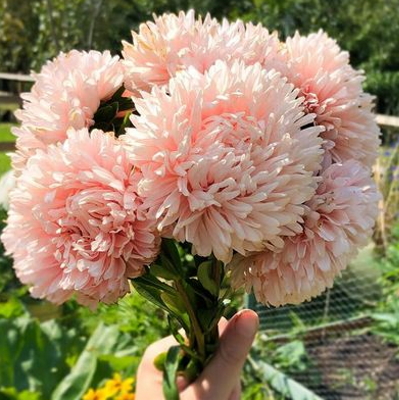
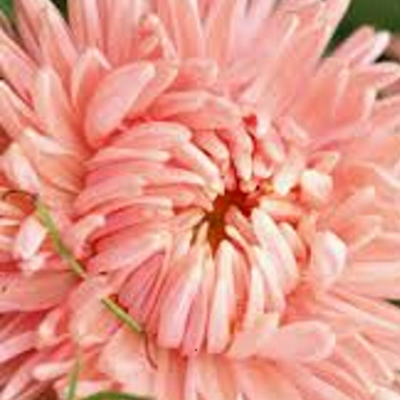 This annual aster provides soft peach-pink blossoms about 6-8 cm in diameter. They are relatively moderately easy to grow when following the seeding and growing guidelines. Cut blooms last 7-10 days while garden blooms last 14-20 days. Blooms will top 90 cm stems and will bloom all summer. Cut all spent flowers to promote prolong and enhance bloom duration.
This annual aster provides soft peach-pink blossoms about 6-8 cm in diameter. They are relatively moderately easy to grow when following the seeding and growing guidelines. Cut blooms last 7-10 days while garden blooms last 14-20 days. Blooms will top 90 cm stems and will bloom all summer. Cut all spent flowers to promote prolong and enhance bloom duration. -
Out of stock
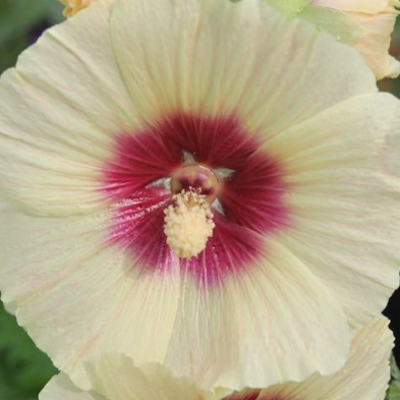
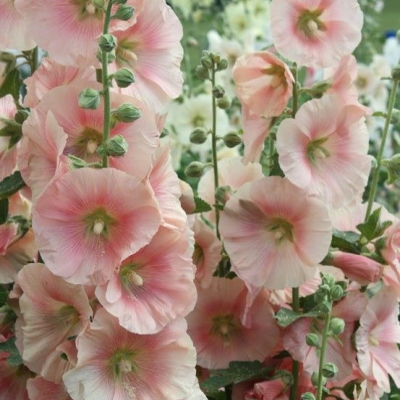 Hollyhock Seeds -Coral & Indian Spring Mix The semi-tall stalks of Indian Spring Hollyhock are filled with single and semi-double blooms in shades of pink, coral, white, cream, purple, and lavender. Prolifically blooming, Indian Spring Mix is known to bloom in its first year, which is unusual for Hollyhocks.
Hollyhock Seeds -Coral & Indian Spring Mix The semi-tall stalks of Indian Spring Hollyhock are filled with single and semi-double blooms in shades of pink, coral, white, cream, purple, and lavender. Prolifically blooming, Indian Spring Mix is known to bloom in its first year, which is unusual for Hollyhocks. -
Out of stock
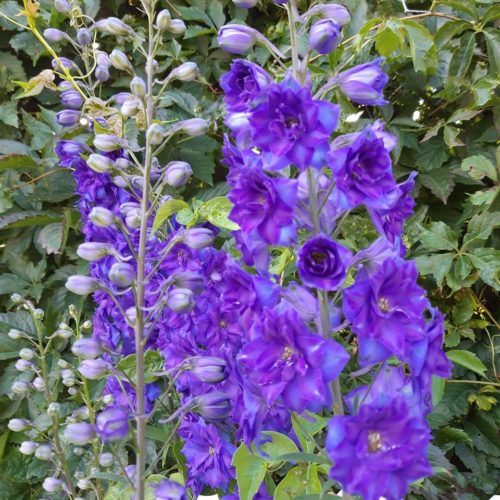 Matures 130-150 days: Also known as Pacific Coast hybrids, Delphinium elatum "Pacific Giant" is a group of regal delphiniums with tall, spiky blooms available in the colors shown. At maturity, the plants reach impressive heights of 1.5-2.5 meters "Pacific Giant" delphiniums are suitable for growing in plant hardiness zones 2 through 9. Long flower-filled spikes bloom in a beautiful blue. The flowers populating the spikes are symmetrically shaped, with huge 8 cm blooms. This delphinium also has mildew resistance.
Matures 130-150 days: Also known as Pacific Coast hybrids, Delphinium elatum "Pacific Giant" is a group of regal delphiniums with tall, spiky blooms available in the colors shown. At maturity, the plants reach impressive heights of 1.5-2.5 meters "Pacific Giant" delphiniums are suitable for growing in plant hardiness zones 2 through 9. Long flower-filled spikes bloom in a beautiful blue. The flowers populating the spikes are symmetrically shaped, with huge 8 cm blooms. This delphinium also has mildew resistance. -
Out of stock
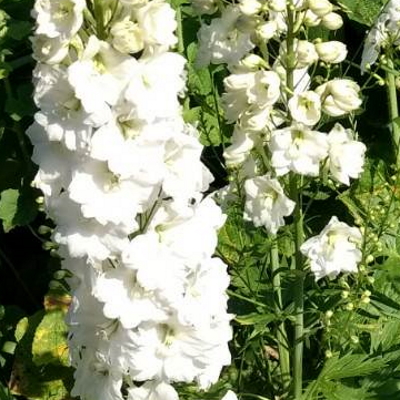
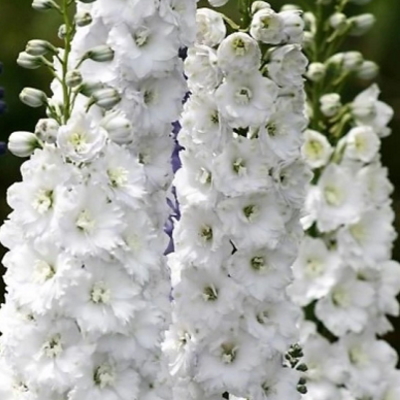 An F1 hybrid breeding breakthrough. Excellent bloom production during short days for cut flowers. GREENHOUSE: Sow in Jan. or early Feb. Freeze seed for 24 hrs. just before sowing, to break dormancy. Use Jiffy Mix or fine sand for a growing medium. Germinate in cool soil at 54°F/12°C for 20 days, according to color (best colors are smallest seedlings). High temp. will prevent germ. Grow seedlings cool, at 60°F/16°C days and 50°F/10°C nights. DIRECT SOWING: Sow outside in late August in cool soil. Freeze seed 24 hours before sowing. Do not pinch the flower heads. For improved blossoms, add lime to the soil each year.
An F1 hybrid breeding breakthrough. Excellent bloom production during short days for cut flowers. GREENHOUSE: Sow in Jan. or early Feb. Freeze seed for 24 hrs. just before sowing, to break dormancy. Use Jiffy Mix or fine sand for a growing medium. Germinate in cool soil at 54°F/12°C for 20 days, according to color (best colors are smallest seedlings). High temp. will prevent germ. Grow seedlings cool, at 60°F/16°C days and 50°F/10°C nights. DIRECT SOWING: Sow outside in late August in cool soil. Freeze seed 24 hours before sowing. Do not pinch the flower heads. For improved blossoms, add lime to the soil each year. -
Out of stock
 Tiny blue flowers are an iconic addition to any garden. Although not a ‘true’ forget-me-not, this species has very similar flowers. This easy-to-grow annual blooms just weeks after planting and grows in almost any sunny spot. Chinese Forget-Me-Not attracts bees, butterflies, and hummingbirds to the garden and makes for gorgeous cut flowers. Self-seeding annual.
Tiny blue flowers are an iconic addition to any garden. Although not a ‘true’ forget-me-not, this species has very similar flowers. This easy-to-grow annual blooms just weeks after planting and grows in almost any sunny spot. Chinese Forget-Me-Not attracts bees, butterflies, and hummingbirds to the garden and makes for gorgeous cut flowers. Self-seeding annual. -
Out of stock
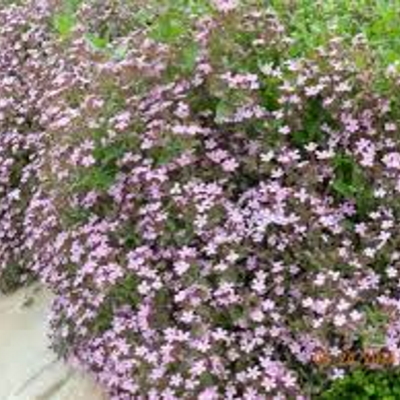
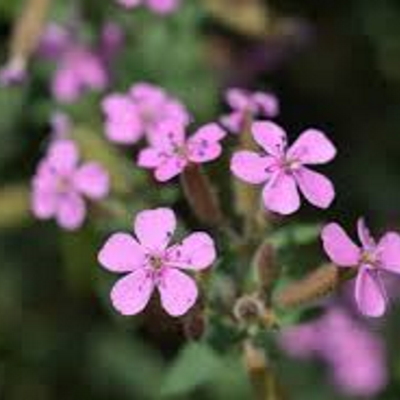 Soapwort is a favourite perennial for cool-alpine and rock gardens. This semi-evergreen blooms from May to August with five-petaled pink flowers joined at the base to form a nectar tube that is highly attractive to bees. Provide good drainage. The roots really can be used to make soap. Rock Soapwort looks marvelous in containers, but best in situations when it can trail and seed itself. Sturdy and easy to grow. Stems are thicker, stronger, taller, and easier to manage than those of annual gypsophila, an otherwise similar flower. 3/4 to 1" dusty pink blooms float above gray-blue, waxy foliage. Branching plant habit. Also known as cow soapwort.
Soapwort is a favourite perennial for cool-alpine and rock gardens. This semi-evergreen blooms from May to August with five-petaled pink flowers joined at the base to form a nectar tube that is highly attractive to bees. Provide good drainage. The roots really can be used to make soap. Rock Soapwort looks marvelous in containers, but best in situations when it can trail and seed itself. Sturdy and easy to grow. Stems are thicker, stronger, taller, and easier to manage than those of annual gypsophila, an otherwise similar flower. 3/4 to 1" dusty pink blooms float above gray-blue, waxy foliage. Branching plant habit. Also known as cow soapwort. -
 One of the latest blooming wildflowers in the Northwest. Rising up to 3 or 4 feet in height with purple/blue/white flowers, this hardy plant adapts to an incredible range of conditions. We find it on windswept and salt-sprayed coastal bluffs, in damp forest clearings along pristine trout streams, and growing out of pavement cracks in the economy parking lot of the airport. In our experience, about the only thing this adaptable plant doesn't stand up to is constant rabbit browsing.
One of the latest blooming wildflowers in the Northwest. Rising up to 3 or 4 feet in height with purple/blue/white flowers, this hardy plant adapts to an incredible range of conditions. We find it on windswept and salt-sprayed coastal bluffs, in damp forest clearings along pristine trout streams, and growing out of pavement cracks in the economy parking lot of the airport. In our experience, about the only thing this adaptable plant doesn't stand up to is constant rabbit browsing. -
Out of stock
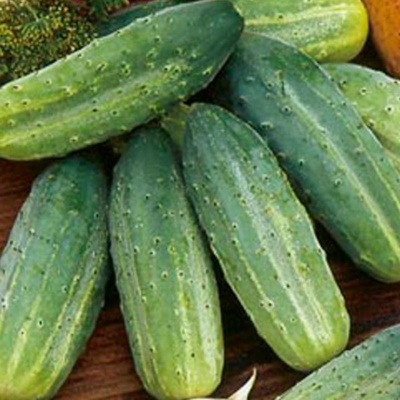 Early (40-45 days) Russian Heirloom pickling variety for open ground and greenhouses. Light green, very delicious cucumbers, 10-14 cm long, weight 100-140 grams. Resistant to powdery mildew. Use fresh and for pickling.
Early (40-45 days) Russian Heirloom pickling variety for open ground and greenhouses. Light green, very delicious cucumbers, 10-14 cm long, weight 100-140 grams. Resistant to powdery mildew. Use fresh and for pickling. -
-
 This cheerful variety will be the star of your cutting garden! An unexpected beauty, it has seemingly endless combinations of red, rose, scarlet, lavender, gold, yellow, salmon, orange, and pink. A perfect choice for beautiful bouquets all summer. Dahlia Flowered Mix zinnias are super showy border plants that grow 90-110 cm tall
This cheerful variety will be the star of your cutting garden! An unexpected beauty, it has seemingly endless combinations of red, rose, scarlet, lavender, gold, yellow, salmon, orange, and pink. A perfect choice for beautiful bouquets all summer. Dahlia Flowered Mix zinnias are super showy border plants that grow 90-110 cm tall -
Out of stock
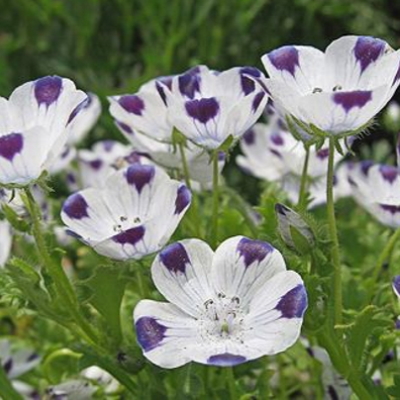
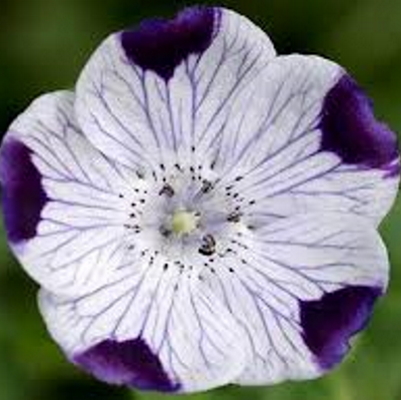 Five spot wildflowers are named for their distinct flowers: 2.5 cm light blue on white blossoms of five petals, each of which is tipped with a vivid, deep purple spot. They are reasonably compact plants that grow to 30 cm high and 20 cm wide and do not spread over the course of the summer. They prefer cool climates, germinating best in soil temperatures of 13-18 C. Perfect for cool springs. They should be able to survive if given lots of shade. They are annuals, and they’ll die back with the first frost. If allowed to die back naturally they reseeds and you will have new plants next year. They bloom consistently and impressively all spring long.
Five spot wildflowers are named for their distinct flowers: 2.5 cm light blue on white blossoms of five petals, each of which is tipped with a vivid, deep purple spot. They are reasonably compact plants that grow to 30 cm high and 20 cm wide and do not spread over the course of the summer. They prefer cool climates, germinating best in soil temperatures of 13-18 C. Perfect for cool springs. They should be able to survive if given lots of shade. They are annuals, and they’ll die back with the first frost. If allowed to die back naturally they reseeds and you will have new plants next year. They bloom consistently and impressively all spring long. -
Out of stock
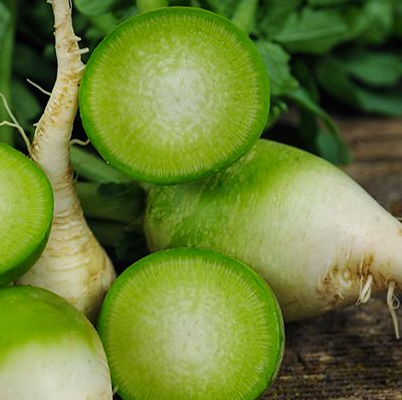 The unmistakably pungent flavor of wasabi can clear the sinuses and invigorate the palate. The energizing flavor found in plants like true wasabi and horseradish root can also be found in the Wasabi Radish of Japan. This is a medium-size oblong Daikon type radish packs a wallop of tingling wasabi heat. Add the peppery flavour to stir-fries and sandwiches or sliced paper-thin to enhance a salad or your favorite Asian recipe. Spring planting benefit is that you can let a couple of plants go to seed as their pods are delicious and pack immense heat. Sow early in spring but late in summer August-September when the soil is 18-22 C produces a great crop. Plenty of water and space helps prevent these delightful hot radishes from going woody.
The unmistakably pungent flavor of wasabi can clear the sinuses and invigorate the palate. The energizing flavor found in plants like true wasabi and horseradish root can also be found in the Wasabi Radish of Japan. This is a medium-size oblong Daikon type radish packs a wallop of tingling wasabi heat. Add the peppery flavour to stir-fries and sandwiches or sliced paper-thin to enhance a salad or your favorite Asian recipe. Spring planting benefit is that you can let a couple of plants go to seed as their pods are delicious and pack immense heat. Sow early in spring but late in summer August-September when the soil is 18-22 C produces a great crop. Plenty of water and space helps prevent these delightful hot radishes from going woody. -
-
-
Out of stock

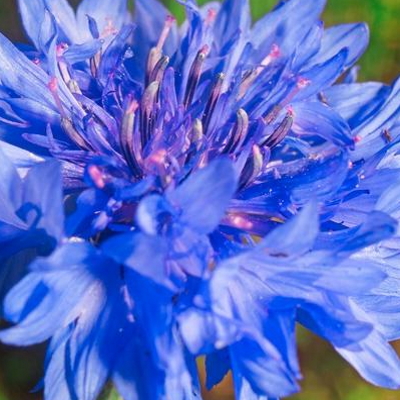 Bachelor's Button or Cornflower-It's hard to beat the colours of the bachelor's button. It got the name "cornflower" because it grew as a weed in cornfields, but you may welcome it in your garden. It does spread, but it is easy to pull out any extras. This tall 90 cm mix comes in the colours of purple, blue, pink and white provide papery blossoms that bring summer colour to the garden. They're attractive planted in a group in a corner or open spot in the garden. Deadhead regularly to prolong blooming. Plant periodically over spring to prolong bloom times.
Bachelor's Button or Cornflower-It's hard to beat the colours of the bachelor's button. It got the name "cornflower" because it grew as a weed in cornfields, but you may welcome it in your garden. It does spread, but it is easy to pull out any extras. This tall 90 cm mix comes in the colours of purple, blue, pink and white provide papery blossoms that bring summer colour to the garden. They're attractive planted in a group in a corner or open spot in the garden. Deadhead regularly to prolong blooming. Plant periodically over spring to prolong bloom times. -
Out of stock
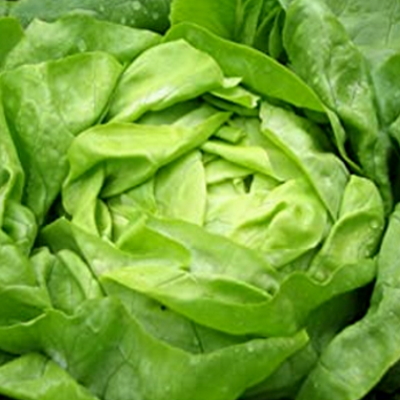 Buttercrunch is a real winner and always a favorite in our organic gardens. This is a butterhead type of lettuce with crisp, thick well-formed medium to dark green outer leaves which hides the buttery yellow-white heart. Buttercrunch has good resistance to bolting. For ultimate flavour and nutrition eat directly after picking. We found that all lettuce, especially our buttercrunch grows in moist rich organic compost. Spring lettuce is grown in sunny locations, while summer crops prefer light shade. Since lettuce is a cool-weather crop, sow the seed as soon as the soil can be worked in the spring then every two weeks thereafter to ensure a continuous supply. Sow seed about 3 mm deep. Head lettuce such as Buttercrunch should be thinned to 30 cm apart to provide ample nutrients and room for growth. An even supply of moisture during the entire growth period is imperative for success. Harvest head lettuce by cutting the head off at the base just below the lower leaves.
Buttercrunch is a real winner and always a favorite in our organic gardens. This is a butterhead type of lettuce with crisp, thick well-formed medium to dark green outer leaves which hides the buttery yellow-white heart. Buttercrunch has good resistance to bolting. For ultimate flavour and nutrition eat directly after picking. We found that all lettuce, especially our buttercrunch grows in moist rich organic compost. Spring lettuce is grown in sunny locations, while summer crops prefer light shade. Since lettuce is a cool-weather crop, sow the seed as soon as the soil can be worked in the spring then every two weeks thereafter to ensure a continuous supply. Sow seed about 3 mm deep. Head lettuce such as Buttercrunch should be thinned to 30 cm apart to provide ample nutrients and room for growth. An even supply of moisture during the entire growth period is imperative for success. Harvest head lettuce by cutting the head off at the base just below the lower leaves. -
Out of stock
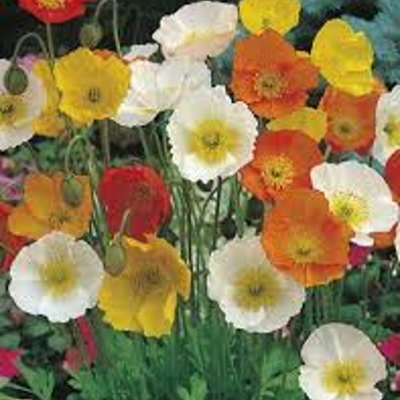 Papaver nudicaule. The Iceland Poppy is a hardy short-lived perennial. It self sows easily so will last for years to come. The cup-shaped blooms have a texture like crepe paper and appear in a range of subdued pastel colours; apricot, gold, tangerine, and white. Sow Iceland Poppy seeds in early spring or late fall where they are to grow permanently. The flower stalks grow to around 30cm tall and are among the longest-lasting poppies as cut flowers. Use a candlestick to seal the cut stem to prolong them as cut flowers. They are highly attractive to bees. Plant in late fall or early spring. Poppy seeds need to be cold stratified to germinate. Poppies only need soil that is ordinary and moist, but well-drained. The seeds should not be planted deeply; they just need to be compressed into the soil, as they need light to germinate. The best method for planting is to mix one part seed with 5 parts sand and scatter over the prepared growing area.
Papaver nudicaule. The Iceland Poppy is a hardy short-lived perennial. It self sows easily so will last for years to come. The cup-shaped blooms have a texture like crepe paper and appear in a range of subdued pastel colours; apricot, gold, tangerine, and white. Sow Iceland Poppy seeds in early spring or late fall where they are to grow permanently. The flower stalks grow to around 30cm tall and are among the longest-lasting poppies as cut flowers. Use a candlestick to seal the cut stem to prolong them as cut flowers. They are highly attractive to bees. Plant in late fall or early spring. Poppy seeds need to be cold stratified to germinate. Poppies only need soil that is ordinary and moist, but well-drained. The seeds should not be planted deeply; they just need to be compressed into the soil, as they need light to germinate. The best method for planting is to mix one part seed with 5 parts sand and scatter over the prepared growing area. -
Out of stock
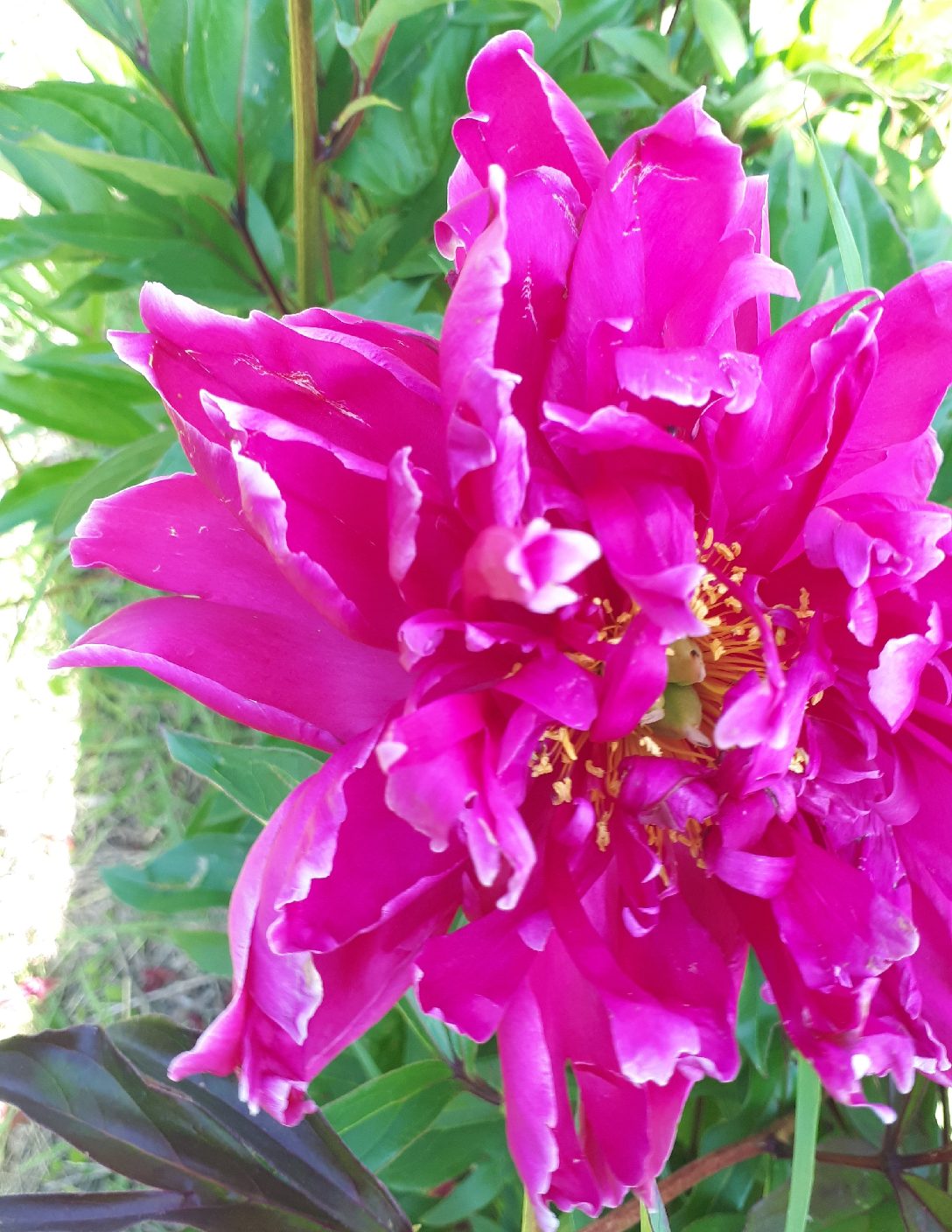
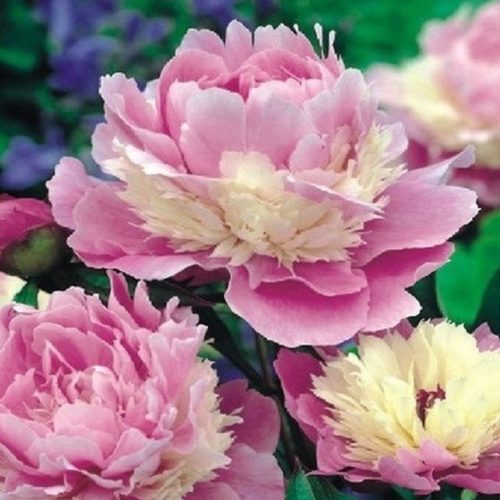 Mixed heritage variety peony plants. $10.00 each root or 5 roots for $35.00
Mixed heritage variety peony plants. $10.00 each root or 5 roots for $35.00 -
Out of stock
 Enjoy a baby's breath that is actually pink! Plant in your sunny perennial garden and watch as large panicles of true light pink flowers splash your garden from early through midsummer. This upright, well-branched, bush type grows up to 3' tall. Use as a filler plant to cover dying bulb foliage or for perennials that go dormant in the summer months. The pretty pink flowers also are perfect in floral arrangements! Makes an excellent dried flower.
Enjoy a baby's breath that is actually pink! Plant in your sunny perennial garden and watch as large panicles of true light pink flowers splash your garden from early through midsummer. This upright, well-branched, bush type grows up to 3' tall. Use as a filler plant to cover dying bulb foliage or for perennials that go dormant in the summer months. The pretty pink flowers also are perfect in floral arrangements! Makes an excellent dried flower. -
Out of stock
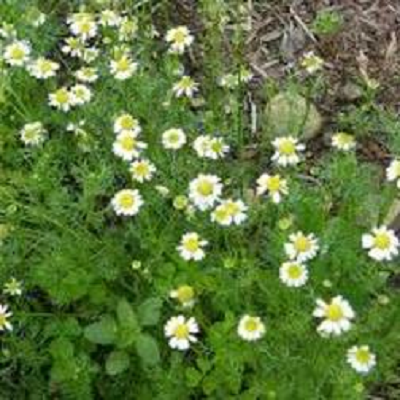
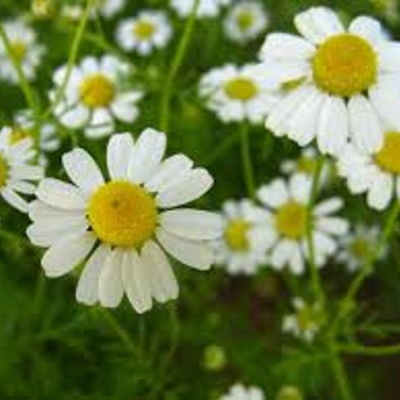 65 days. Matricaria recutita. Annual. The plant is used fresh and dried to make great tea, perfumes, and hair rinse. This variety produces high yields of small white daisy-like flowers. Try fresh chamomile steeped and chilled for a refreshing summer beverage. Package contains: 100 Seeds
65 days. Matricaria recutita. Annual. The plant is used fresh and dried to make great tea, perfumes, and hair rinse. This variety produces high yields of small white daisy-like flowers. Try fresh chamomile steeped and chilled for a refreshing summer beverage. Package contains: 100 Seeds -
Out of stock
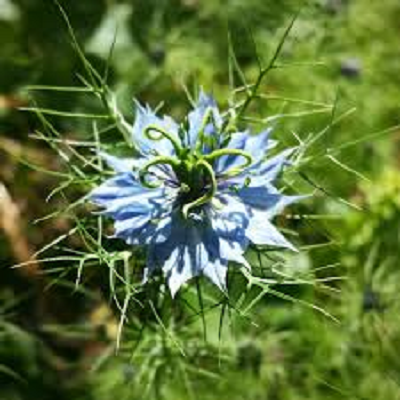
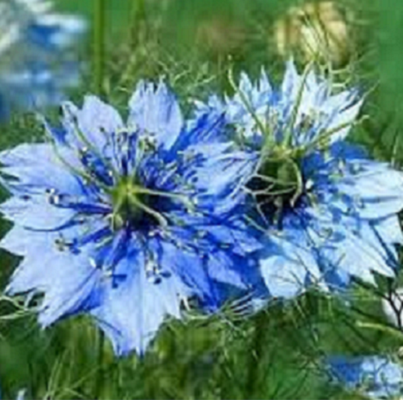 Nigella damascena. Persian Jewels Nigella seeds are also known as Love-in-a-Mist. Its delicate appearance belies its hardy, dependable nature. Pale as a baby flower, Persian Jewel matures to intense shades of violet, blue, white, and pastels in between. Each flower emerges from a tangle of lacy foliage. After blooming, curious-looking fruits ripen, dry, and eventually release seeds for the next season. These distinctive seed heads can be dried for flower arrangements. Everlasting flowers are grown especially for its spiky decorative seed pods. Germinates 10–14 days at 60°. Grow on at 60–65°. Set transplants 6–9" apart. For continuous bloom, direct seed weekly until June. Nigella grows 20–50cm (8–20") tall.
Nigella damascena. Persian Jewels Nigella seeds are also known as Love-in-a-Mist. Its delicate appearance belies its hardy, dependable nature. Pale as a baby flower, Persian Jewel matures to intense shades of violet, blue, white, and pastels in between. Each flower emerges from a tangle of lacy foliage. After blooming, curious-looking fruits ripen, dry, and eventually release seeds for the next season. These distinctive seed heads can be dried for flower arrangements. Everlasting flowers are grown especially for its spiky decorative seed pods. Germinates 10–14 days at 60°. Grow on at 60–65°. Set transplants 6–9" apart. For continuous bloom, direct seed weekly until June. Nigella grows 20–50cm (8–20") tall. -
Out of stock
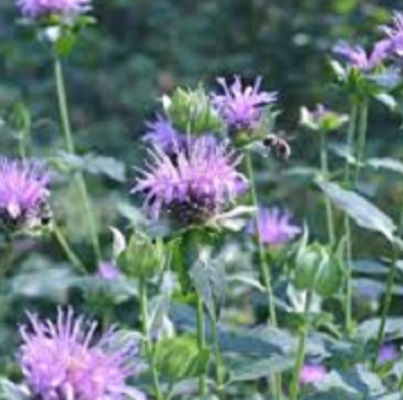 A bee magnet, softly aromatic leaves, and colourful flower heads are just a few lovely characteristics of Bee Balm (Monarda). Guaranteed to create a great impact when planted in masses with its starry explosions of colour burst from mid-summer through until the last frost. Known as bergamot. Leaves can be used in the kitchen before flowers appear.
A bee magnet, softly aromatic leaves, and colourful flower heads are just a few lovely characteristics of Bee Balm (Monarda). Guaranteed to create a great impact when planted in masses with its starry explosions of colour burst from mid-summer through until the last frost. Known as bergamot. Leaves can be used in the kitchen before flowers appear. -
-
Out of stock
 The earliest and best white spine cucumber ever offered, Early Fortune Organic is a fresh and clean tasting slicer is descended from seeds first bred in Michigan in 1906. The fruits grow 18-21cm long, and 5cm in diameter. The plants are richly productive for the home or market gardener. The plants are productive in the greenhouse or polytunnel, but equally so growing in raised beds or the open field. Give the fruits a quick rub with a tea towel or similar cloth to remove spines at harvest time.
The earliest and best white spine cucumber ever offered, Early Fortune Organic is a fresh and clean tasting slicer is descended from seeds first bred in Michigan in 1906. The fruits grow 18-21cm long, and 5cm in diameter. The plants are richly productive for the home or market gardener. The plants are productive in the greenhouse or polytunnel, but equally so growing in raised beds or the open field. Give the fruits a quick rub with a tea towel or similar cloth to remove spines at harvest time. -
Out of stock
 Strawberry Spinach is one of the best-kept secrets of the herb world. A herb that dates back to the 1600s in North America and northern Europe, this annual sets tiny, deliciously tender leaves that can be cooked like spinach or used fresh in salads. It also sets small red fruits in late summer and fall that taste a bit like mulberries which are lovely fresh or canned. A delectable and useful plant, you'll want it front and center of the herb garden! Strawberry Spinach sets new leaves all season long. The foliage is slender, deeply lobed, and appears in rosettes along long, slender stems. Quite small, they resemble small raspberries with a bright strawberry-red colour! The berries arise at the base of each stem and having berries on spinach plants is uniquely interesting! Direct sow Strawberry Spinach in full sun and rich, fertile soil. It reaches about 45 cm high and 30 cm wide. Easy and trouble-free.
Strawberry Spinach is one of the best-kept secrets of the herb world. A herb that dates back to the 1600s in North America and northern Europe, this annual sets tiny, deliciously tender leaves that can be cooked like spinach or used fresh in salads. It also sets small red fruits in late summer and fall that taste a bit like mulberries which are lovely fresh or canned. A delectable and useful plant, you'll want it front and center of the herb garden! Strawberry Spinach sets new leaves all season long. The foliage is slender, deeply lobed, and appears in rosettes along long, slender stems. Quite small, they resemble small raspberries with a bright strawberry-red colour! The berries arise at the base of each stem and having berries on spinach plants is uniquely interesting! Direct sow Strawberry Spinach in full sun and rich, fertile soil. It reaches about 45 cm high and 30 cm wide. Easy and trouble-free. -
Out of stock
 This carrot’s beautiful red-purple exterior provides a striking contrast to its yellow-orange interior and light yellow core. A treat for the eye when sliced, its sweet, almost spicy, flavour makes this carrot a home gardener’s favorite. Considered the most refined purple carrot available. Danvers carrots were developed in the 1870s in Danvers, Massachusetts. It became a popular seed due to the root's deep orange color and rich flavor. This variety does better than many popular carrots because it forms nice roots even in heavy, shallow soils. Purple Dragon carrots are considered to be very hardy and tend to do best in cooler northern regions.
This carrot’s beautiful red-purple exterior provides a striking contrast to its yellow-orange interior and light yellow core. A treat for the eye when sliced, its sweet, almost spicy, flavour makes this carrot a home gardener’s favorite. Considered the most refined purple carrot available. Danvers carrots were developed in the 1870s in Danvers, Massachusetts. It became a popular seed due to the root's deep orange color and rich flavor. This variety does better than many popular carrots because it forms nice roots even in heavy, shallow soils. Purple Dragon carrots are considered to be very hardy and tend to do best in cooler northern regions.

